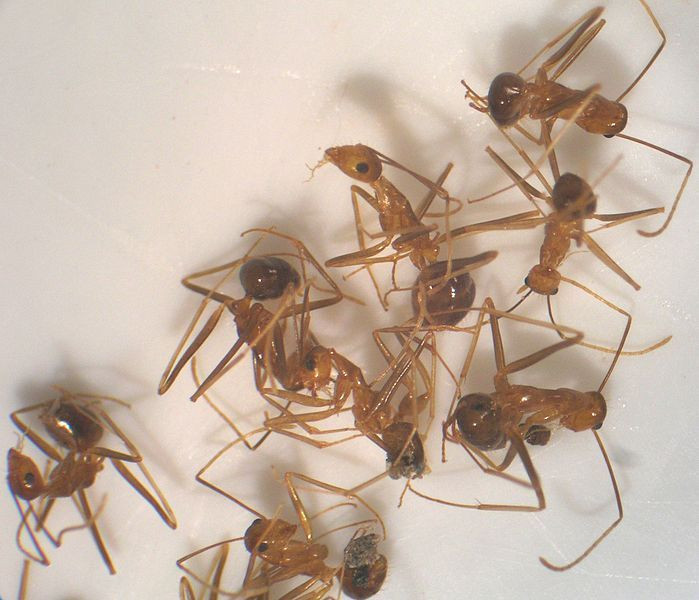Crazy Ants Use Formic Acid To Wash Off Fire-Ant Venom; Becoming Dominant Invasive Species In US Southeast

Tan-colored crazy ants can produce a compound that helps them detoxify wounds sustained in altercations with venomous fire ants, a new study conducted by researchers at the University of Texas at Austin has shown, adding that invasive crazy ants are rapidly displacing fire ants in areas across the southeastern U.S.
When a crazy ant is smeared with the venom in a fight with a fire ant, it secretes formic acid from its abdominal glands, transfers it to its mouth and then spreads it on its body -- a practice that makes crazy ants almost invincible in combat with fire ants over resources such as food and nesting sites. In lab experiments, the crazy ants that were allowed to detoxify themselves had a 98 percent survival rate, according to the study, published in the journal Science Express.
“As this plays out, unless something new and different happens, crazy ants are going to displace fire ants from much of the southeastern U.S. and become the new ecologically dominant invasive ant species,” Ed LeBrun of the University of Texas at Austin, said in a statement.
An earlier research revealed recently that where ants take hold, the numbers and types of other insects, such as spiders, centipedes and crustaceans, decrease, generating ripple effects on ecosystems by reducing food sources for birds, reptiles and other animals.
LeBrun described watching a battle between red fire ants and crazy ants over a dead cricket.
“When the crazy ants were dabbed with fire ant venom, they would go off and do this odd behavior where they would curl up their gaster (an ant’s modified abdomen) and touch their mouths.”
It was then that LeBrun first suspected the crazy ants were somehow detoxifying the fire-ant venom. Subsequent experiments helped the researchers identify the detoxification agent and measure its effectiveness.
To test the effectiveness of the formic acid, researchers sealed the glands of crazy ants with nail polish and put them in a fight against red fire ants. The researchers found that without the ability to apply the detoxifying compound to themselves, about half of the crazy ants affected with fire-ant venom died, while 98 percent of the crazy ants with unsealed glands survived.
Although it is unclear how formic acid helps detoxify the venom, scientists believe that it may prevent the venom from penetrating the outer layers of a crazy ant’s exoskeleton.
“They are opportunistic nesters. So they’re easily transported by us,” LeBrun said. “But the flip side of that is that if people living in or visiting invaded areas are careful and check for the crazy ants when moving or going on longer trips, they could have a huge impact on the spread.”
Check out the video here:
© Copyright IBTimes 2024. All rights reserved.





















